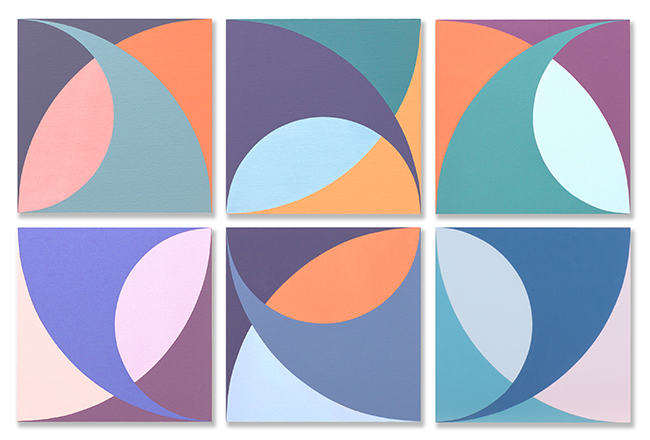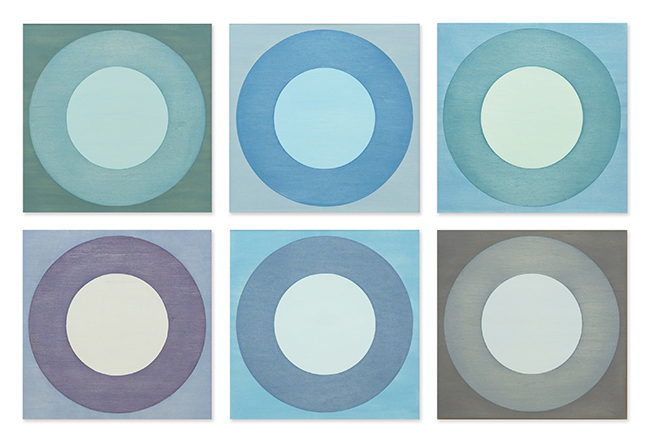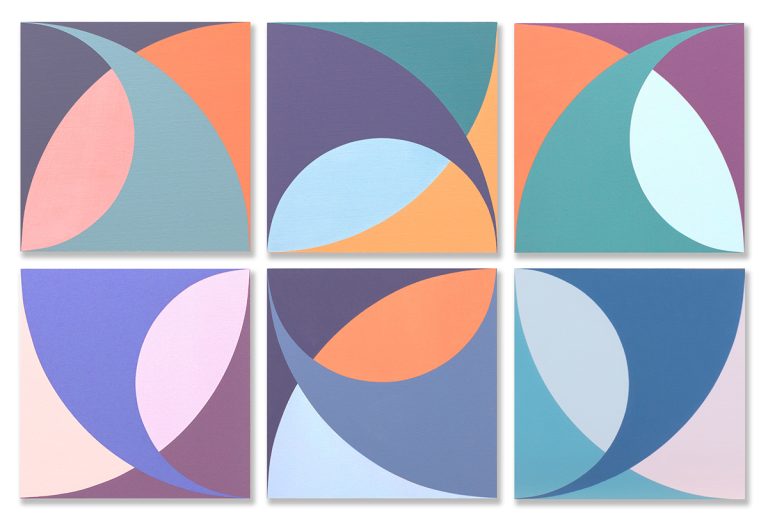Haeley Kyong, a creator whose work transcends boundaries and speaks directly to the soul. With a deep-rooted belief in the transformative power of art, Kyong endeavors to evoke primal emotions and spark introspection through her minimalist yet evocative pieces.
Born and raised in South Korea, Kyong’s artistic journey has been shaped by a fusion of cultural influences and academic rigor. Educated at the Mason Gross School of the Arts at Rutgers University and Columbia University in New York City, she seamlessly blends traditional techniques with contemporary sensibilities. This unique blend allows her to maintain a timeless perspective while exploring the frontiers of artistic expression.

In One World, Many Visions, Haeley Kyong presents a colorful description of different outlooks on the world we inhabit. The artwork focuses on capturing the diversity of human perspectives, yet it ties these perspectives together through a unifying element. By doing so, Kyong highlights how individuals can perceive the same world in myriad ways while being united by a shared existence.
The palette used in this piece is rich in bold contrasts, underscoring the individuality of each outlook while ensuring that the different visions coexist harmoniously. The minimalistic approach serves to strip away unnecessary details, leaving room for interpretation and personal connection. Kyong’s use of color as a storytelling medium allows for a deeper emotional engagement, evoking a sense of belonging and introspection.

At its core, this work is about understanding the diversity of thought and perception that exists in our world. Through her deliberate choice of abstraction, Kyong asks viewers to confront their own biases and assumptions, encouraging a deeper awareness of the many layers that make up our shared reality. It’s as much a social commentary as it is an exploration of the human psyche.
In Around the World to the Six Continents, Kyong delves into the idea of human interconnectedness while celebrating individuality. This piece conveys a truth about the world: every person is a unique individual, but together, we create a collective whole. The foundation of the artwork is based on a circle, symbolizing the world.

Kyong uses arcs from half-circles and quarter-circles, connecting them to form a composition that represents the six continents. The simplicity of the geometric forms evokes a sense of order and interconnectedness. Yet, despite this simplicity, there is an underlying complexity in how these shapes interact with one another, much like how people, with all their differences, come together to form communities.
What stands out about this piece is the subtle balance between unity and individuality. Kyong expertly navigates the tension between being part of a whole and maintaining one’s distinct identity. The circular forms not only represent geographical continents but also serve as metaphors for human relationships, constantly in flux, adjusting and evolving. The overall composition carries a message of balance and cooperation, with Kyong illustrating that although we come from different parts of the world, we share a singular existence.
Kyong’s A Circular Story Teller is a deeply introspective exploration of identity, heredity, and the invisible threads that connect us as human beings. In this piece, Kyong draws inspiration from DNA—the unseen code that shapes who we are. She translates this complex concept into a visual form, using a large piece of paper folded using traditional techniques to mimic the intricate structure of DNA.
The folded paper itself becomes a storyteller, revealing the layers and connections that define us. Kyong uses the circular form once again, drawing a parallel between the cyclical nature of life and the generational transmission of genetic material. The repetition of circular elements reflects the idea of inheritance—what we receive and what we pass on. This concept is both literal, in terms of biology, and metaphorical, in terms of cultural and familial legacies.
What makes A Circular Story Teller particularly compelling is Kyong’s ability to distill a complex idea into something visually digestible. There’s a quiet elegance to the piece, with its minimalist design inviting contemplation. Kyong’s interest in what makes us who we are—from the visible aspects of our appearance to the invisible forces like DNA—underscores her fascination with the unseen forces that shape our identities.
Through this work, Kyong raises profound questions about choice, inheritance, and the human condition. We are given our traits without asking for them, yet we are expected to carry them forward. The work invites viewers to reflect on their own journeys of self-discovery, as well as the ways in which they navigate the balance between what is inherited and what is created anew.
In these three works, Haeley Kyong offers a glimpse into her artistic vision—one that is rooted in simplicity yet rich in meaning. Her minimalist approach allows viewers to engage with her pieces on a deeply personal level, while her exploration of human interconnectedness, diversity, and identity speaks to universal truths that resonate across cultures and experiences.

